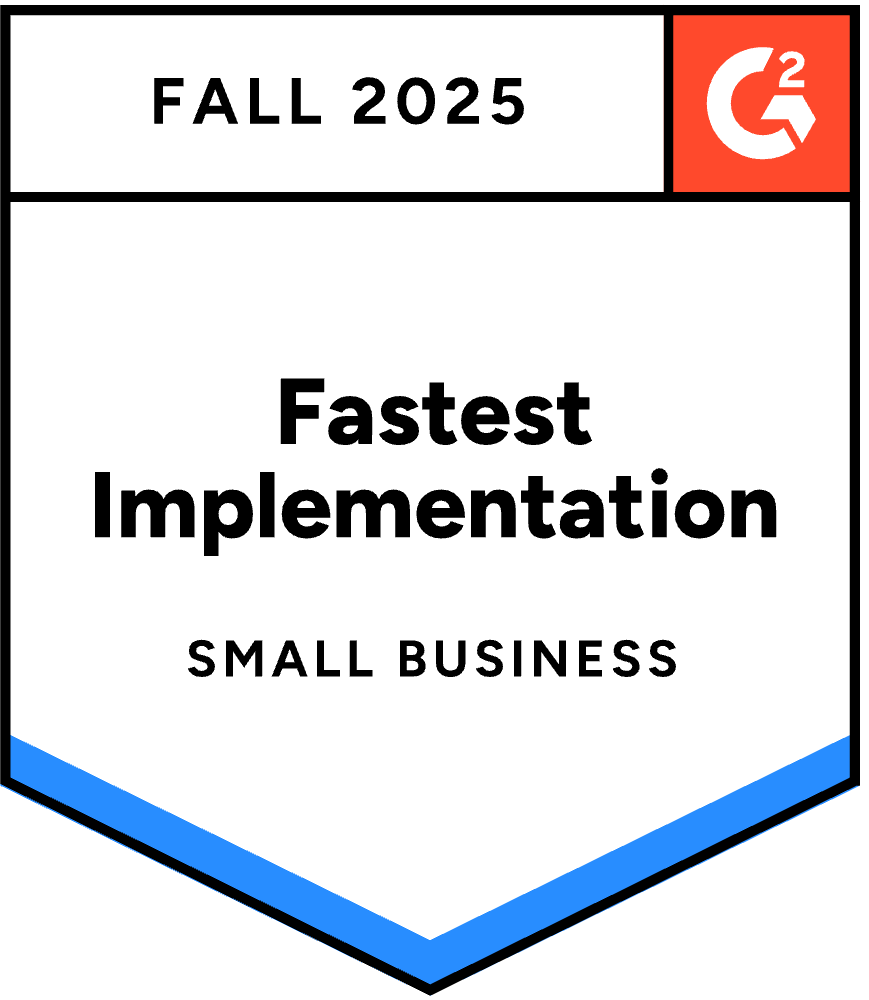What is ETL(Extract, Transform, Load)?
ETL, which stands for Extract, Transform, Load, is a common process in data integration and data warehousing. It's used to move data from one or more source systems to a target data repository, such as a data warehouse, data lake, or a database. The ETL process involves three main steps:
- Extract: In this step, data is extracted from source systems, which can include databases, spreadsheets, logs, web services, or any other data source. The extraction can be done in various ways, such as through batch processes, real-time streaming, or change data capture. The goal is to collect data from various sources and bring it into a centralised location for further processing.
- Transform: Once the data is extracted, it often needs to be transformed to make it suitable for the target system or analytical purposes. This transformation can involve data cleaning, enrichment, aggregation, filtering, and structuring. Data may also be converted into a common format, standardised, and validated to ensure quality and consistency.
- Load: After the data is extracted and transformed, it is loaded into the target data repository. This could be a data warehouse, a data lake, or a specific database designed for reporting and analytics. The loading process ensures that the data is stored in a way that makes it accessible and queryable by business intelligence tools and analysts.
The ETL process is crucial in data analytics and business intelligence because it enables organisations to consolidate and structure data from various sources, making it ready for analysis and reporting. ETL tools and systems are used to automate and streamline these processes, reducing the risk of errors and improving the efficiency of data integration.
In recent years, the term "ELT" (Extract, Load, Transform) has also gained popularity. ELT flips the traditional ETL process by loading data into the target system first and then applying transformations. This approach is often used in situations where the target system can handle and process raw data efficiently, such as with data lakes and cloud-based data warehouses.
How Does ETL Work?

Here's a more detailed explanation of how ETL works:
- Extraction (E):
- Data Source Identification: The first step is to identify the data sources that need to be extracted. These sources can include databases, files, APIs, logs, spreadsheets, or other data storage systems.
- Data Extraction: Data is then extracted from the identified sources. This extraction can be done using various methods including batch processing, real-time streaming, or change data capture. The goal is to collect the necessary data and transfer it to a staging area for further processing.
- Transformation (T):
- Data Cleaning: Data extracted from source systems may contain inconsistencies, errors, or missing values. Data cleaning involves tasks such as deduplication, handling missing data, and correcting errors to ensure data quality.
- Data Transformation: This step involves applying various transformations to the data to make it suitable for the target system. Transformations can include data normalisation, aggregation, filtering, and formatting. The data may also be enriched by joining it with reference data or applying business rules.
- Data Quality Checks: Data quality checks are performed to validate the transformed data and ensure its accuracy and consistency. If any issues are identified, they are typically logged or flagged for further review and resolution.
- Load (L):
- Data Staging: Transformed data is staged in a temporary storage area, often called a staging area. Staging allows for additional validation and quality checks before the data is loaded into the target system.
- Data Loading: Once the data is in the staging area and passes validation checks, it is loaded into the target data repository, which can be a data warehouse, data lake, or database.
- Indexing and Optimisation: Depending on the target system, data may be indexed and optimised for efficient querying and analysis.
- Post-Load Processing:
- After the data is loaded, post-load processing may occur, which can include generating summary reports, triggering notifications, or updating metadata.
- Monitoring and Maintenance:
- ETL processes are typically scheduled to run at regular intervals, whether daily, hourly, or in real-time. Monitoring is essential to ensure the ongoing success of the ETL process. This involves checking for failures, data inconsistencies, and system performance.
- Error Handling and Logging:
- ETL processes should include robust error handling and logging mechanisms to capture any issues or failures during the process. This information is valuable for troubleshooting and improving the ETL pipeline.
- Documentation:
- Comprehensive documentation of the ETL process is crucial. It should include details about data sources, transformations, business rules, and any changes made to the ETL pipeline over time.
- Comprehensive documentation of the ETL process is crucial. It should include details about data sources, transformations, business rules, and any changes made to the ETL pipeline over time.
Why is ETL Important?
ETL is important for several reasons, especially in data integration, analytics, and business intelligence. Here are some key reasons why ETL is important:
- Data Integration: ETL plays a crucial role in integrating data from multiple, often disparate, sources into a single, consolidated repository. This integration is essential for organisations with diverse data sources, as it ensures data consistency and accessibility.
- Data Quality: ETL processes often involve data cleansing and transformation, which are vital for improving the quality and reliability of data. Data inconsistencies, errors, and missing values are addressed during the transformation phase, leading to more accurate and trustworthy data.
- Data Preparation for Analysis: ETL prepares data for analysis and reporting. By applying transformations and aggregations, it makes data suitable for querying and generating insights. This is particularly important in data-driven decision-making processes.
- Performance Optimisation: ETL can optimise data storage and indexing, making data retrieval faster and more efficient. This is especially critical for large datasets and when dealing with complex queries in data warehousing and analytics.
- Historical Data Management: ETL processes can be used to manage historical data, including archiving and versioning. This is essential for compliance, auditing, and historical analysis.
- Business Intelligence: ETL is a fundamental component of business intelligence (BI) solutions. It helps organisations extract, transform, and load data into BI tools and reporting platforms, making it accessible to analysts and decision-makers.
- Real-time Data Integration: ETL processes can be designed for real-time or near-real-time data integration. This is important for scenarios where up-to-the-minute data is critical for decision-making, such as in financial markets, e-commerce, and monitoring systems.
- Data Governance and Compliance: ETL provides an opportunity to enforce data governance policies and maintain compliance with regulations and industry standards. It allows for auditing and tracking of data changes.
- Scalability: As data volumes grow, ETL processes can be scaled to handle larger datasets and more complex transformations. This scalability is important for businesses experiencing data growth.
- Automation and Efficiency: ETL tools and processes automate data movement and transformation, reducing the need for manual intervention. This increases efficiency and reduces the risk of human errors in data processing.
- Data Security: ETL processes can incorporate data security measures to protect sensitive information. Encryption, access controls, and masking of sensitive data are all part of ETL considerations in security.
- Consistency and Standardisation: ETL enforces data standardisation and consistency by transforming data into a common format and applying business rules. This ensures that different parts of the organisation use a consistent data model.
- Cost Savings: By centralising data management and automating processes, ETL can help organisations save costs related to data handling, analysis, and reporting.
In summary, ETL is important because it enables organisations to turn raw, disparate data into a valuable asset for decision-making and analysis. It ensures data quality, consistency, and accessibility, and it is a fundamental component of data-driven strategies in the modern business landscape.
What Are the Challenges of ETL?
The ETL process, while essential for data integration and analytics, comes with several challenges. These challenges can impact the efficiency and effectiveness of ETL workflows. Some common challenges include:
- Data Quality Issues: ETL processes often deal with data from various sources, and this data may have inconsistencies, errors, missing values, and duplicates. Cleaning and ensuring data quality can be a significant challenge.
- Data Volume and Scalability: As data volumes grow, ETL processes must scale to handle the increased load. This can strain system resources and impact performance.
- Data Variety: ETL processes often need to handle different data formats, structures, and sources. This requires flexibility and adaptability in the ETL workflow to process a wide variety of data.
- Data Transformation Complexity: Complex data transformations may be required to make data suitable for analysis. These transformations can be challenging to design and execute, and they can introduce performance bottlenecks.
- Data Extraction Complexity: Extracting data from some source systems, especially legacy systems or third-party APIs, can be complex and may require specialised knowledge or tools.
- Real-Time or Near-Real-Time Processing: Achieving real-time or near-real-time data processing in ETL can be technically challenging and may require specialised tools and architecture.
- Error Handling and Recovery: ETL processes should have robust error handling and recovery mechanisms to deal with issues like data source outages, transformation errors, and data loading failures.
- Data Security and Compliance: Handling sensitive data in ETL processes while maintaining data security and compliance with regulations can be a complex and sensitive issue.
- Metadata Management: Managing metadata about the data sources, transformations, and loading processes is critical but can become unwieldy as the ETL system grows.
- Documentation and Traceability: Proper documentation of ETL processes is crucial, but it can often be overlooked. This can lead to difficulties in understanding and maintaining ETL workflows over time.
- Complex Data Relationships: Some ETL processes involve complex data relationships and hierarchies. Navigating and preserving these relationships can be challenging.
- Performance Optimisation: Ensuring ETL processes run efficiently and meet performance requirements can be a constant challenge. This includes optimising database queries, indexing, and ETL workflows.
- Cost Management: ETL can be resource-intensive, both in terms of hardware and software costs. Managing the costs associated with ETL processes is essential, especially as data volumes increase.
- Data Loss and Latency: Depending on the ETL process design, there can be data loss or latency between data extraction and data loading. This can be problematic in real-time data-driven applications.
- Version Control: Managing changes and updates to ETL workflows and configurations, while maintaining version control, can be challenging, particularly when multiple people are involved in ETL development.
- Data Lineage and Auditing: Tracking data lineage, changes, and auditing ETL processes is essential for data governance and compliance but can be complex to implement effectively.
To address these challenges, organisations often invest in ETL tools and platforms that offer automation, monitoring, and scalability. Additionally, ongoing maintenance, performance tuning, and a strong focus on data quality are essential for the success of ETL processes.
What Is the Next Generation of ETL?
The next generation of ETL is evolving to meet the demands of modern data processing and analytics. This evolution is driven by various trends and technologies. Here are some key aspects of the next generation of ETL:
- Real Time Data Processing: The next generation of ETL is shifting towards real-time and near-real-time data processing. This allows organisations to make decisions based on the most up-to-date information. Technologies like stream processing and change data capture (CDC) play a significant role in achieving real-time ETL.
- Data Integration Platforms: ETL tools are becoming part of broader data integration platforms that support data movement, transformation, and orchestration. These platforms often include data quality, data governance, and data cataloguing features, providing a comprehensive data management solution.
- Cloud-Native ETL: Cloud-based ETL services are gaining popularity due to their scalability and flexibility. Cloud-native ETL solutions are designed to work seamlessly with cloud data storage and processing services, making it easier to handle big data and leverage cloud resources.
- Serverless ETL: Serverless computing, which automatically scales resources based on demand, is becoming increasingly important in ETL. Serverless ETL frameworks reduce infrastructure management overhead and improve cost-efficiency.
- DataOps and Automation: The next generation of ETL emphasises DataOps principles, promoting collaboration, automation, and version control in the development and deployment of ETL pipelines. Automation reduces manual intervention and accelerates the development and deployment of ETL processes.
- Data Orchestration: ETL is evolving into more general data orchestration, allowing organizations to manage data workflows that involve not just extraction, transformation, and loading, but also data migration, data synchronisation, and data pipeline automation.
- AI and Machine Learning Integration: ETL tools are incorporating AI and machine learning capabilities for data profiling, anomaly detection, predictive modelling, and recommendation systems. This enables organisations to extract more value from their data.
- Data Catalogue and Metadata Management: Enhanced data catalogues and metadata management are becoming integral to the ETL process. They help track data lineage, document data transformations, and maintain data governance.
- Low-Code/No-Code ETL: To make ETL accessible to a wider audience, low-code and no-code ETL tools are gaining popularity. These platforms allow users with limited technical skills to create ETL workflows through visual interfaces.
- Self-Service ETL: Self-service ETL solutions empower business users and data analysts to perform ETL tasks without heavy reliance on IT or data engineering teams. This accelerates data preparation and analysis.
- Containerisation: ETL workflows are being containerised using technologies like Docker and Kubernetes, making it easier to deploy, manage, and scale ETL processes in a containerised environment.
- Event-Driven Architectures: Event-driven ETL, which responds to data events and triggers processes accordingly, is becoming more prevalent. This architecture is well-suited for handling data streams and real-time data.
- Data Governance and Compliance: The next generation of ETL places greater emphasis on data governance and compliance, ensuring that data is handled and transformed in a way that complies with regulations and internal policies.
In summary, the next generation of ETL is characterised by real-time processing, cloud-native solutions, automation, AI integration, and a shift towards self-service and DataOps practices. These trends are driven by the need for more agility, flexibility, and efficiency in handling diverse and vast amounts of data in the modern data landscape.
ELT vs ETL
ETL (Extract, Transform, Load):
- Order of Operations:
- Extract: Data is first extracted from source systems and transferred to a staging area.
- Transform: The extracted data is then transformed, cleaned, enriched and structured.
- Load: Finally, the transformed data is loaded into the target data repository, often a data warehouse.
- Typical Use Cases: ETL is commonly used in traditional data warehousing scenarios, where data is structured, and transformations are applied before loading it into a relational database. It's well-suited for scenarios where data quality and consistency are paramount.
- Data Transformation: Extensive data transformation occurs during the ETL process. Data is shaped into a format suitable for analysis before being loaded into the data warehouse.
- Batch Processing: ETL processes are often batch-oriented, with data being extracted and transformed on a scheduled basis.
- Structured Data Focus: ETL is generally used for structured data sources where the schema is well-defined and data quality is relatively high.
ELT (Extract, Load, Transform):
- Order of Operations:
- Extract: Data is first extracted from source systems and loaded directly into the target data repository, such as a data lake or cloud-based data warehouse.
- Load: Data is loaded in its raw, untransformed state.
- Transform: Data transformations occur within the target system, leveraging the processing power and scalability of modern data storage and analytics platforms.
- Typical Use Cases: ELT is commonly used in modern data processing scenarios, including big data analytics, real-time or near-real-time data ingestion, and scenarios where raw data storage and flexibility are essential.
- Data Transformation: Data transformation occurs within the target system, which can include applying transformations on the raw data as needed for specific analyses.
- Raw Data Storage: ELT often stores raw, untransformed data in the target repository, enabling various transformation and analysis processes.
- Real-Time and Near-Real-Time Processing: ELT can handle real-time or near-real-time data ingestion, making it suitable for scenarios where up-to-the-minute data is required.
- Scalability: ELT takes advantage of the scalability of modern cloud-based data platforms, enabling the efficient processing of large volumes of data.
- Semi-Structured and Unstructured Data Focus: ELT is well-suited for handling semi-structured and unstructured data sources, as it can store raw data in its original form before transformation.
In summary, the key difference between ETL and ELT lies in the order of the transformation step. ETL transforms data before loading it into the target repository, while ELT loads data in its raw form and performs transformations within the target system.
The choice between ETL and ELT depends on the specific data integration needs of an organisation, the nature of the data sources, and the data processing requirements.
How to Get Started with ETL
Getting started with ETL (Extract, Transform, Load) involves a series of steps to plan, design, and implement your ETL processes. Here's a step-by-step guide to help you begin with ETL:
- Define Your Goals and Objectives: Start by clearly defining your goals and objectives for ETL. What are you trying to achieve with your data integration and transformation? Understand the specific business use cases and requirements.
- Understand Your Data: Analyse your data sources to understand their structure, formats, and the quality of data. Identify the source systems, data formats, and any data transformations required to meet your objectives.
- Select ETL Tools or Frameworks: Choose the right ETL tools or frameworks that align with your needs and budget. Popular ETL tools include Melissa, Apache NiFi, Talend, Apache Spark, Informatica, and cloud based ETL services provided by major cloud platforms.
- Data Source Integration: Configure and establish connections to your data sources, and then extract data from these sources, whether they are databases, files, APIs, logs, or other systems.
- Data Staging: Create a staging area to temporarily store the extracted data. This area is used for data validation, cleaning, and initial transformations before it's loaded into the target system.
- Data Transformation: Apply data transformations as needed. This step may include data cleaning, aggregation, formatting, enrichment, and any other operations required to prepare the data for analysis.
- Data Loading: Load the transformed data into the target system, which can be a data warehouse, data lake, or a specific database designed for reporting and analysis.
- Testing and Validation: Implement thorough testing to ensure the ETL process works as expected. This includes data validation, transformation testing, and performance testing.
- Error Handling and Logging: Establish mechanisms for error handling, logging, and monitoring of the ETL process. Create procedures for identifying and addressing issues that may arise during data integration.
- Schedule and Automation: Schedule your ETL processes to run at regular intervals, whether daily, hourly, or in real-time, based on your business requirements. Automation reduces manual intervention and ensures data freshness.
- Documentation: Document your ETL processes comprehensively. This documentation should include details about data sources, transformations, business rules, and any changes made to the ETL pipeline over time.
- Data Governance and Compliance: Consider data governance practices and compliance requirements. Implement data security measures, access controls, and encryption to protect sensitive information.
- Performance Optimisation: Continuously monitor and optimise the performance of your ETL processes. Optimise database queries, indexing, and transformations as needed.
- Scale and Maintain: As your data and business needs grow, scale your ETL processes accordingly. Ensure that your ETL workflows are maintained, and any updates are managed effectively.
- Data Lineage and Auditing: Implement data lineage tracking and auditing to ensure transparency and compliance with data management practices.
- Training and Skill Development: Ensure that your team has the necessary skills and training to manage ETL processes effectively. ETL professionals should be familiar with the chosen ETL tools and best practices.
- Iterate and Improve: ETL is an ongoing process. Continuously assess your ETL pipelines, monitor their performance, and make improvements based on evolving data requirements and business objectives.
Remember that ETL is a complex process, and success depends on careful planning and execution. Start with a clear understanding of your data, objectives, and available resources, and gradually build your ETL processes to meet your specific business needs.
Why Melissa?
Melissa has specialised in data quality management solutions for 40 years and provides a comprehensive catalogue for leading ETL and Data Integration platforms including Microsoft Server Integration Services (SSIS), Pentaho PDI and Talend. Melissa’s built-in data quality components include our Identity Verification solution, which matches name to address, email, and phone number, and verifies national ID and age, in real-time. It also includes Melissa’s Global Address Verification component which cleans, standardises, transliterates, and verifies addresses for over 240 countries. The combined solution provides the data management tools businesses need to collect data from any source, cleanse and transform it, and gain immediate insight for actionable intelligence - empowering them to foster better customer relationships.
250 +
Countries & Territories
1000555787 +
Addresses Verified
40 +
Years Of Experience
10000 +
Satisfied Customers Worldwide






